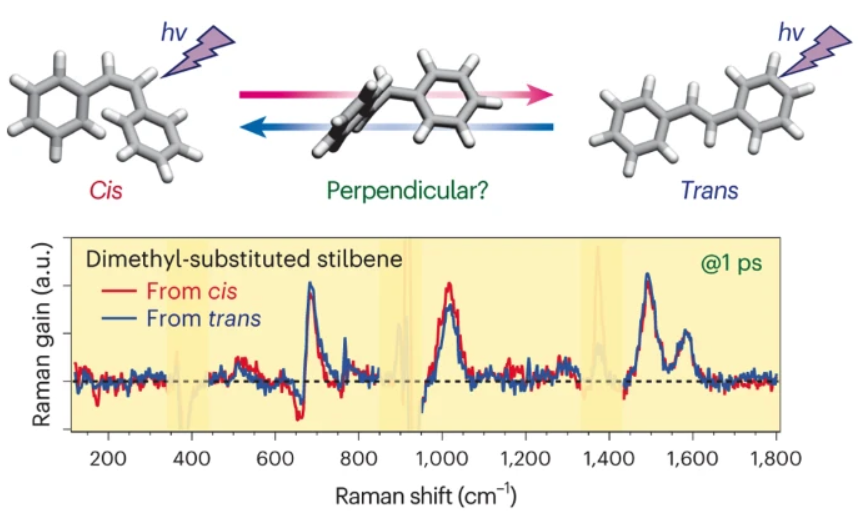A multi-institute team including researchers from the RIKEN Center for Advanced Photonics, RIKEN Cluster for Pioneering Research, Hokkaido University Faculty of Science and ICReDD have successfully observed the so-called “phantom-state” of a photoisomerization reaction and elucidated its structure, which has been a mystery in the field of photochemistry for half a century. Photoisomerization is a key process in various biological functions, including vision, and has promising applications in molecular switches and light-energy conversion systems. The findings of this study are expected to contribute to the increased control and efficiency of photoisomerization reactions through a deeper understanding of the structure of the molecules’ transition states and reaction pathways.
In the photoisomerization reaction known as “cis-trans photoisomerization,” a molecule absorbs light, and part of the molecule rotates around a double bond in the molecule. It has been anticipated that the double bond temporarily breaks and assumes a perpendicular structure appears during the rotation around the double bonds. However, verifying the existence and structure of this state, referred to as the “phantom state,” has been proven challenging due to the extremely short lifetime of the state.
In this study, the research team focused on analyzing derivatives of stilbene, the most typical molecule that undergoes photoisomerization. They successfully observed the phantom state using ultraviolet resonance femtosecond stimulated Raman spectroscopy, which was developed at RIKEN. This technique allows for the tracking of molecular structural changes on a femtosecond timescale (a femtosecond is one quadrillionth of a second). By combining this advanced technique with state-of-the-art quantum chemistry calculations, researchers confirmed the existence and structure of the phantom state.
This research was published in the online edition of Nature Chemistry on January 5th, 2024.


